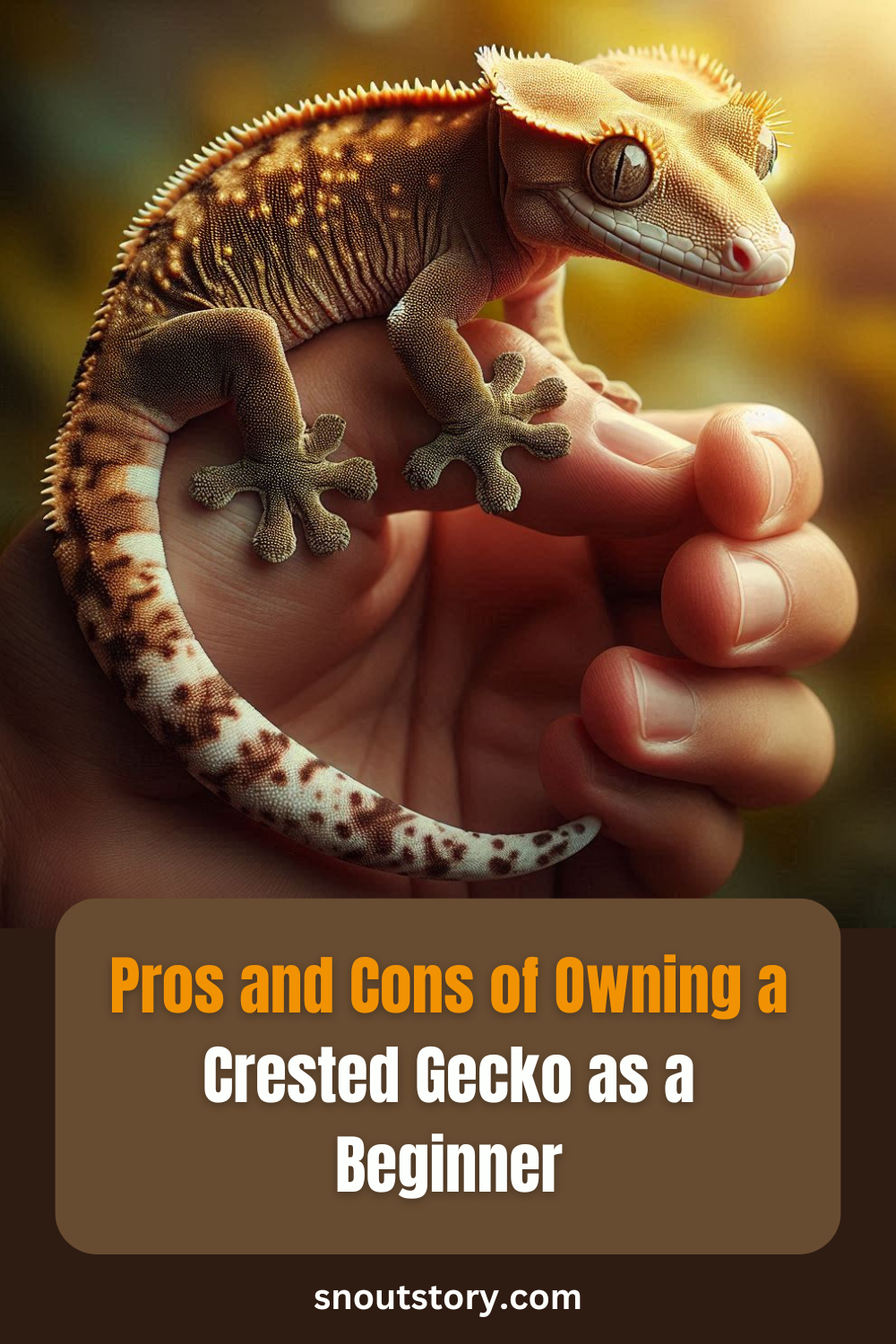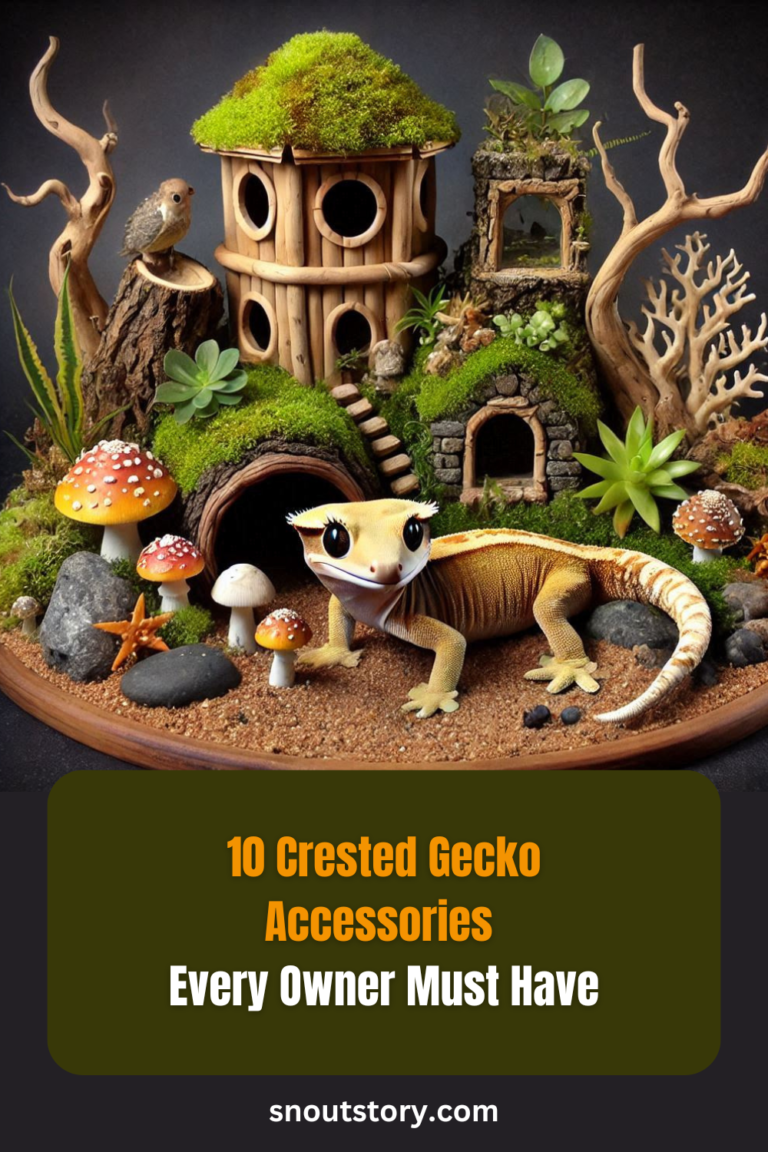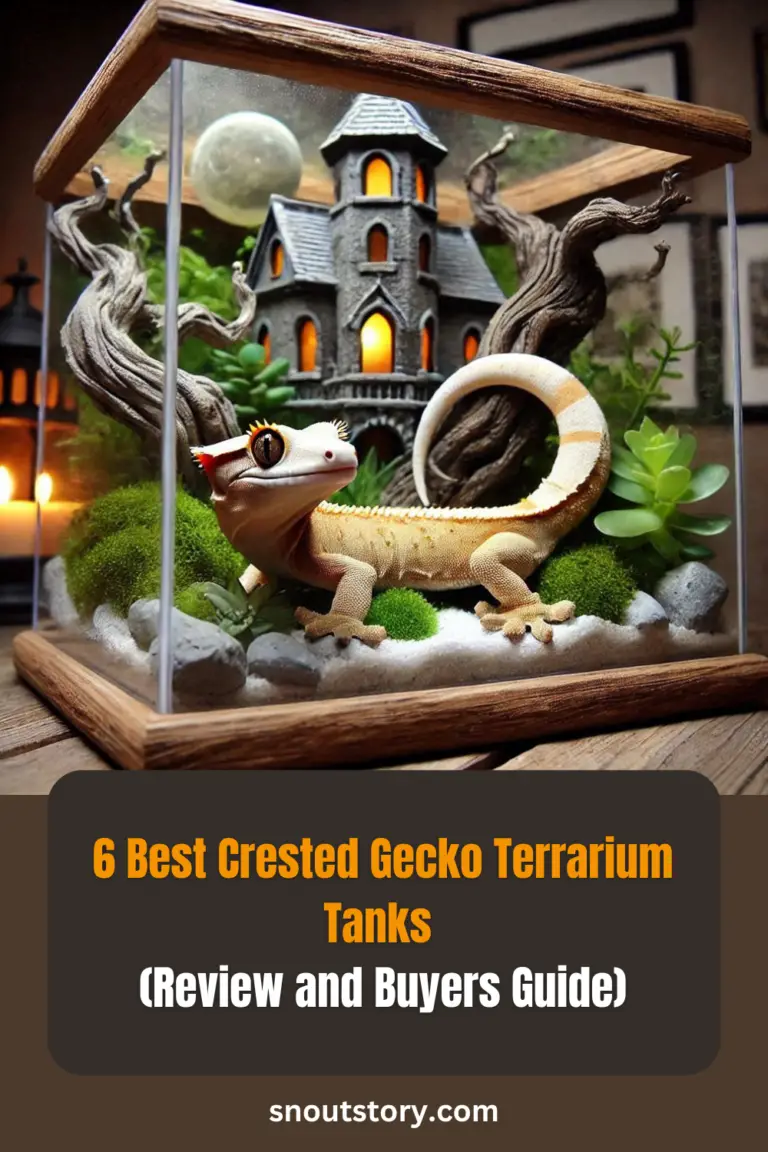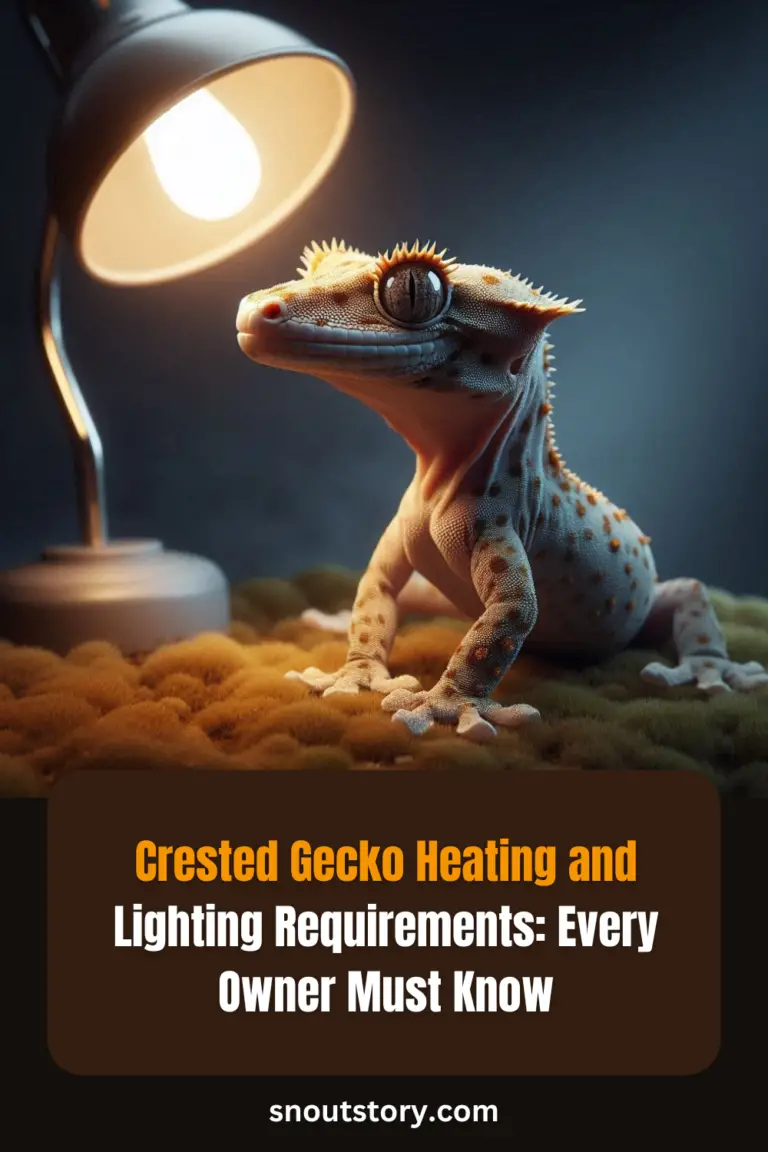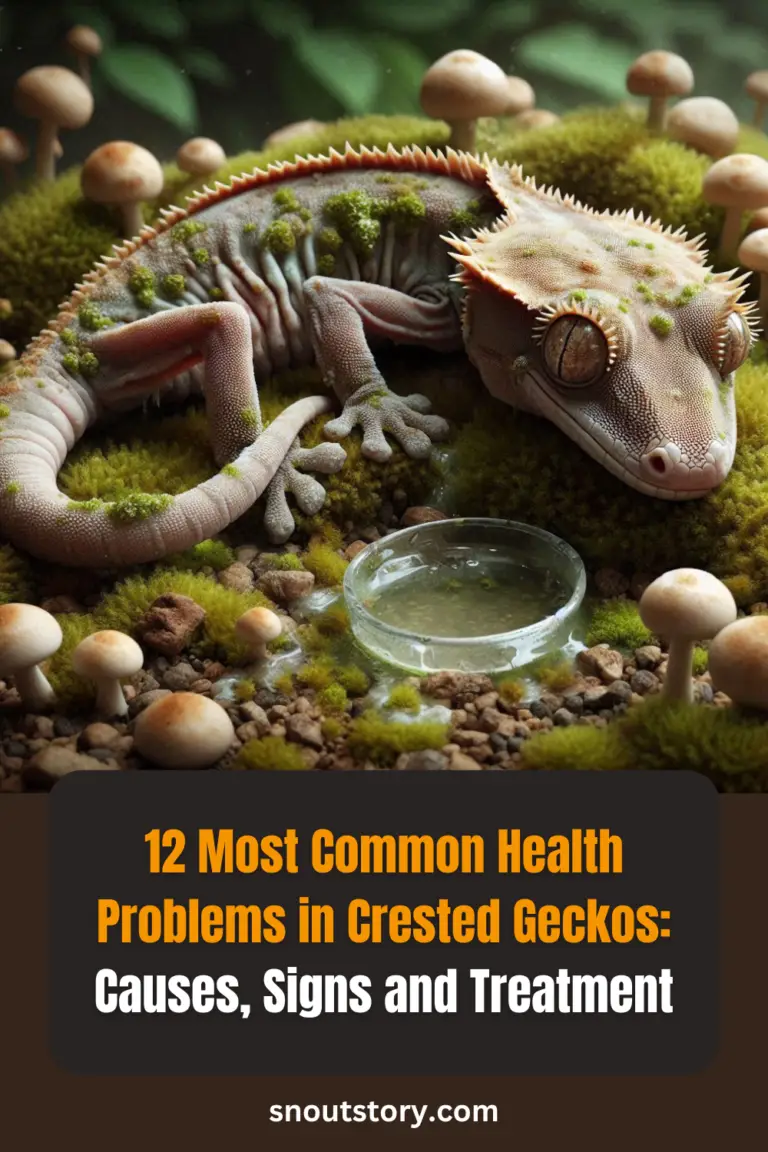Disclaimer
“This Blog is completely reader supported, for any purchase you make from affiliate links on this blog we earn a small commissions with no extra cost to you, which I use to feed my poor puppies 🥺”
Owning a crested gecko can be an incredibly rewarding experience, but it’s important to weigh the pros and cons before making a commitment. These charming reptiles are known for their low maintenance and captivating appearance, making them a popular choice among pet enthusiasts.
However, they also come with specific care requirements that potential owners need to consider. From understanding their dietary needs to ensuring the right habitat conditions, being well-informed will help you decide if a crested gecko is the right pet for you.
Let’s explore the key benefits and challenges of having a crested gecko to help you make an informed decision.
Pros of Owning a Crested Gecko

1. Low Maintenance Requirements
Crested geckos are a fantastic choice for those seeking a pet with low maintenance requirements. These reptiles thrive in simple environments, making them easy to care for even if you’re a beginner.
Their diet primarily consists of commercially available powdered gecko food, mixed with water, which provides balanced nutrition without the hassle of preparing complex meals. Additionally, they do not require specialized heating or lighting, as they thrive at room temperature and can adapt to natural light cycles.
Regular misting of their enclosure maintains the necessary humidity levels, and cleaning the habitat is straightforward with minimal odor issues. By keeping these few easy-to-manage factors in check, you can ensure your crested gecko remains healthy and happy without a significant time investment.
2. Long Lifespan
Crested geckos are known for their impressive lifespan, often living up to 15-20 years with proper care. This long-term commitment makes them ideal pets for those looking for a lasting companion.
To ensure your crested gecko enjoys a healthy life, focus on providing a balanced diet, typically consisting of commercially prepared gecko food and occasional insects. Maintaining a suitable environment is crucial; aim for an enclosure that mimics their natural habitat with adequate humidity levels and temperature control.
Regular health checks and prompt attention to any signs of illness will also contribute to their longevity. Investing time in understanding their specific needs and consistently meeting them will reward you with a thriving, long-lived pet.
3. Unique and Attractive Appearance
Crested geckos captivate with their unique and attractive appearance, making them a favorite among reptile enthusiasts. Their distinct crests running from eyes to tail give them an almost prehistoric look, while their wide variety of colors and patterns add to their allure.
From vibrant oranges and reds to subtle creams and greys, each gecko boasts its own unique palette. Their expressive eyes and sticky toe pads not only enhance their charm but also provide insight into their intriguing behaviors.
To maintain their striking appearance, ensure their diet is rich in nutrients and their habitat is clean and well-maintained. Regular misting helps preserve their skin health, preventing shedding issues that can dull their colors. Investing in UVB lighting, even though not mandatory, can also enhance their natural hues and overall vitality.
4. Docile and Easy to Handle
Crested geckos are known for their docile and easy-to-handle nature, making them ideal pets for both beginners and experienced reptile keepers. These gentle creatures rarely bite and are generally calm, which means handling them can be a stress-free experience.
To ensure your gecko remains comfortable and tame, it’s important to handle them regularly but gently, starting with short sessions and gradually increasing the duration. Create a safe environment during handling sessions by removing any potential hazards and ensuring your hands are clean and free of strong scents.
By providing a consistent routine and a calm approach, you’ll help your gecko feel secure, fostering a bond that makes interaction enjoyable for both you and your pet. Remember, gentle handling and a patient attitude are key to maintaining their docile temperament.
5. Suitable for Small Living Spaces
Crested geckos are an excellent choice for pet owners with small living spaces, as they require minimal room while still providing a rewarding pet-keeping experience. An adult crested gecko thrives in a terrarium that is at least 18x18x24 inches, which can easily fit in apartments, dorms, or small homes.
To make the most of limited space, opt for a vertically oriented enclosure that mimics their natural arboreal habitat. This setup allows you to include essential climbing structures and foliage without taking up much floor area.
Additionally, crested geckos are quiet and low-maintenance, meaning they won’t disturb your living environment. By creating a compact yet enriched habitat, you can ensure your crested gecko stays healthy and content, all while accommodating your space constraints.
Cons of Owning a Crested Gecko
1. Specialized Diet Needs
The specialized diet needs of crested geckos can be a disadvantage for some pet owners due to the precise nutritional requirements these reptiles have. Unlike many other pets, crested geckos cannot thrive on standard commercial pet foods; they require a balanced diet that includes a specific blend of fruit, protein, and calcium.
Commercially available powdered diets, such as those from reputable brands like Pangea or Repashy, are designed to meet these needs but can be more expensive and require careful preparation.
Here are two best Crested Gecko foods I would recommend all crested gecko owners, and also guarantee you guys that these foods will complete your pets all dietary needs:
1. Repashy Crested Gecko MRP Mulberry Madness 6 oz (170g) JAR

2. Pangea Fruit Mix Watermelon Complete Gecko Diet

Additionally, providing occasional live insects, like crickets or dubia roaches, is essential for a well-rounded diet, which adds another layer of complexity and cost.
Ensuring proper supplementation with vitamins and minerals is crucial to prevent deficiencies and health issues, demanding ongoing attention and diligence from the owner. While these dietary needs can seem daunting, they are manageable with the right knowledge and commitment, ensuring your crested gecko remains healthy and vibrant.
2. Temperature and Humidity Control
Managing temperature and humidity control for crested geckos can be a challenging aspect of their care, making it a notable disadvantage for potential owners. These reptiles thrive in specific environmental conditions, typically requiring temperatures between 72-78°F during the day and slightly cooler at night.
Maintaining this range often necessitates the use of thermostats, heat lamps, or ceramic heat emitters, adding to the complexity and cost of their enclosure setup. Humidity is equally crucial, as crested geckos need levels between 50-70% to stay healthy. Achieving this can involve frequent misting, the use of a hygrometer to monitor humidity levels, and possibly the installation of an automatic misting system or humidifier.
Inadequate temperature or humidity control can lead to serious health issues, such as respiratory infections or shedding problems. However, with the right equipment and consistent monitoring, these environmental needs can be met effectively, ensuring your gecko remains comfortable and healthy.
3. Nocturnal Nature
Crested geckos’ nocturnal nature can be a disadvantage for those who prefer interactive pets during the day. These reptiles are most active at night, meaning they spend the daylight hours resting and hidden away, making it difficult to engage with them.
If you enjoy watching or handling your pet during the day, this can be a significant drawback. To accommodate their natural behavior, it’s essential to provide a dim and quiet environment during their active hours. Using red or blue LED lights can allow you to observe their nighttime activities without disturbing them.
Additionally, understanding their nocturnal habits means feeding and misting their enclosure in the evening when they are more likely to be active. Adjusting to a crested gecko’s nocturnal schedule may require some lifestyle changes, but respecting their natural rhythms is crucial for their well-being.
4. Potential Health Issues
Potential health issues in crested geckos can be a significant concern for owners, as these reptiles are prone to specific conditions like metabolic bone disease, respiratory infections, and skin problems.
Ensuring their diet includes adequate calcium and vitamin D3 is crucial to prevent metabolic bone disease, which can lead to weakened bones and deformities. Respiratory infections often stem from improper temperature and humidity levels in the enclosure, so maintaining optimal conditions is essential for their respiratory health.
Regular monitoring for signs of skin infections or shedding problems is also important; issues like retained shed can be mitigated by providing appropriate humidity and rough surfaces in their habitat.
Routine veterinary check-ups are recommended to catch any health issues early and provide timely treatment. Being proactive and knowledgeable about these potential health challenges can help ensure a long and healthy life for your crested gecko.
5. Initial Setup Costs Owning Crested Geckos
Setting up a crested gecko enclosure can be more costly than many prospective owners realize. The initial setup costs include purchasing a suitable tank, typically at least a 20-gallon vertical enclosure, which can range from $50 to $100 or more. Beyond the tank, you’ll need a secure lid, substrate, decor like branches and plants for climbing, and hides for security, all adding up quickly.
Essential equipment such as a heating pad or lamp, thermometers, hygrometers, and a misting system to maintain proper temperature and humidity levels are also necessary investments. Additionally, the cost of initial food supplies, supplements like calcium and vitamin D3, and water treatment drops for safe drinking water must be considered.
To offset these costs, consider buying used equipment from reputable sources or gradually accumulating supplies before bringing your gecko home. Proper planning and budgeting for these initial expenses can ensure your gecko has a comfortable and healthy environment from the start.
Summary
Owning a crested gecko comes with a range of pros and cons that potential pet owners should carefully consider. These fascinating reptiles are known for their low maintenance requirements, long lifespan, unique and attractive appearance, and docile nature, making them suitable for small living spaces. However, they also have specialized dietary needs, require precise temperature and humidity control, are nocturnal, and can face potential health issues. Initial setup costs can also be significant. By weighing these factors, you can make an informed decision about whether a crested gecko is the right pet for you.
For more detailed insights and guidance on crested gecko care, explore our comprehensive guide to ensure a happy and healthy life for your gecko “Crested Gecko: Breed Profile and A Complete Owners Guide”
Recommended
6 Best Crested Gecko Foods (Review and Buyers Guide)
10 Crested Gecko Accessories Every Owner Must Have
6 Best Crested Gecko Terrarium Tanks (Review and Buyers Guide)
Crested Gecko Heating and Lighting Requirements: Every Owner Must Know
12 Most Common Health Problems in Crested Geckos: Causes, Signs and Treatment
11 Rarest Crested Gecko Morphs – Explore the Most Fascinating Morphs

Vedant Narvekar is an experienced digital marketing expert with a profound love for nature and animals. With a career rooted in leveraging online platforms to drive engagement and promote meaningful causes, Vedant’s passion for animals inspired him to start Snout Story—a blog dedicated to educating people about pet keeping and sharing proper knowledge about caring for animals. Drawing on his expertise in digital marketing, Vedant utilizes his platform to advocate for responsible pet ownership, providing valuable insights on pet care, training, nutrition, and more. Through Snout Story, Vedant aims to empower pet lovers with the information they need to provide the best possible care for their furry companions, while also fostering a deeper appreciation for the natural world and the creatures that inhabit it.

